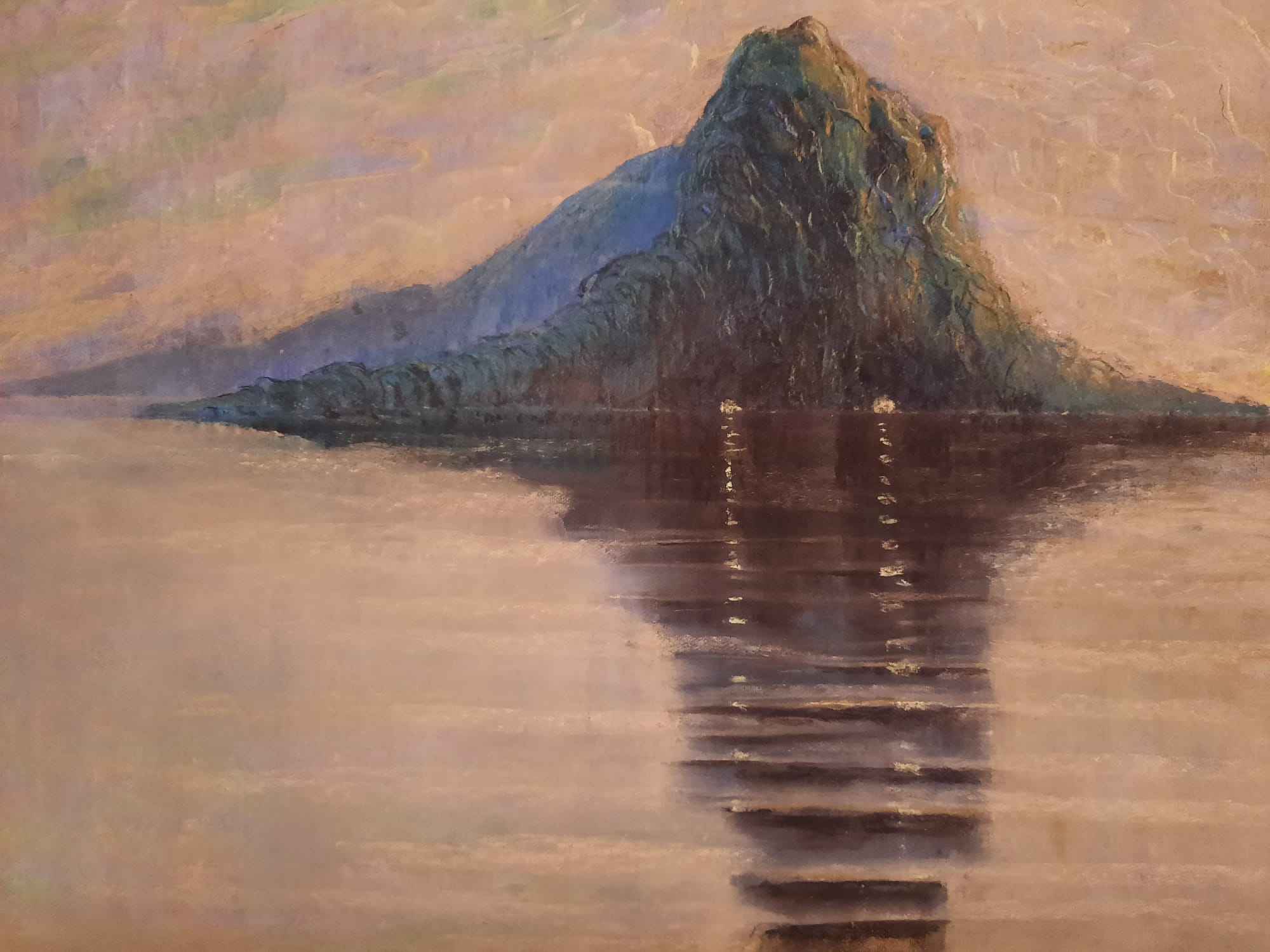M.K. Čiurlionis: Between Worlds – Dulwich Picture Gallery
The work of M.K. Čiurlionis reveals dreamy worlds and imaginary cities in this comprehensive exhibition at the Dulwich Picture Gallery.
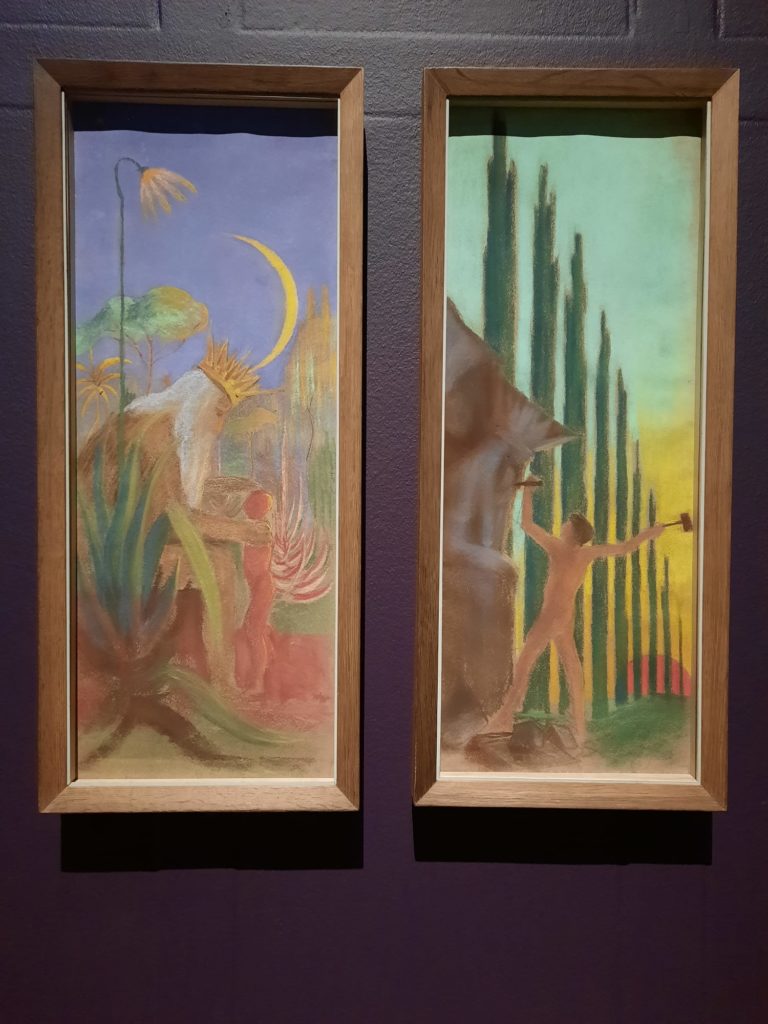
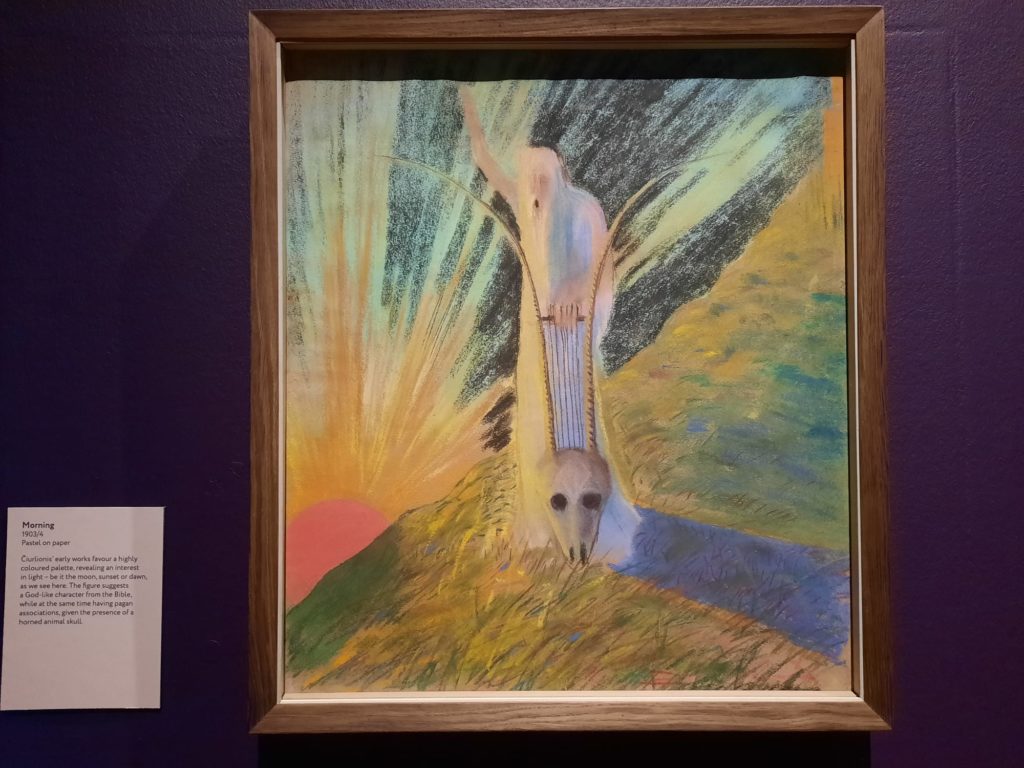
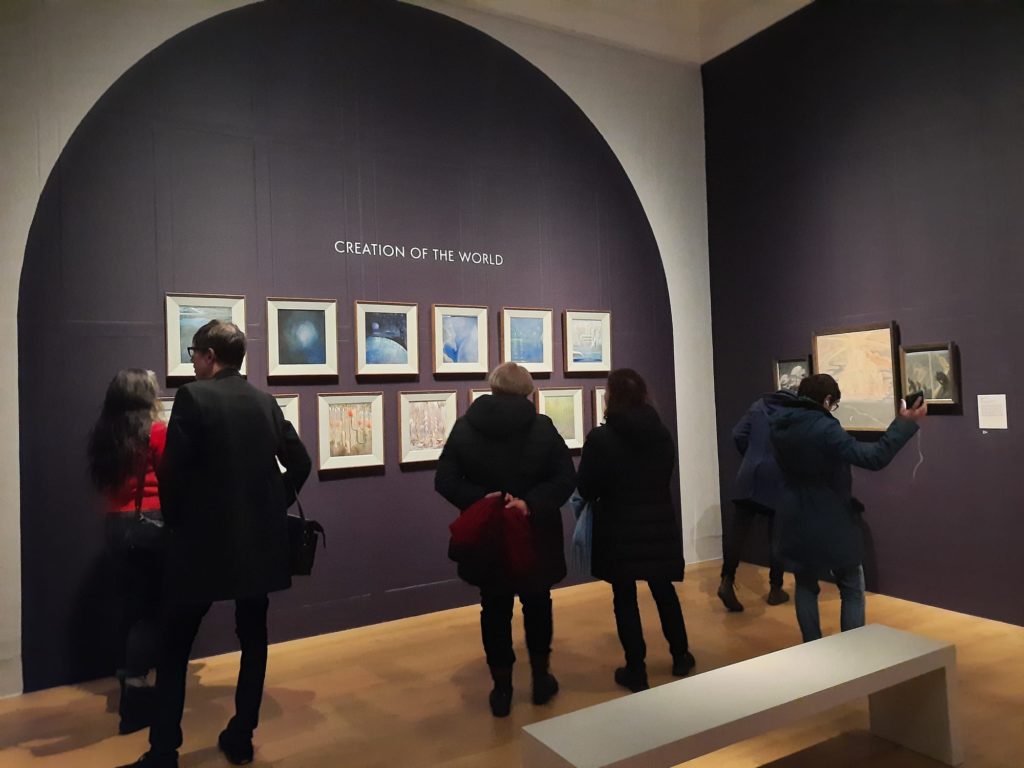
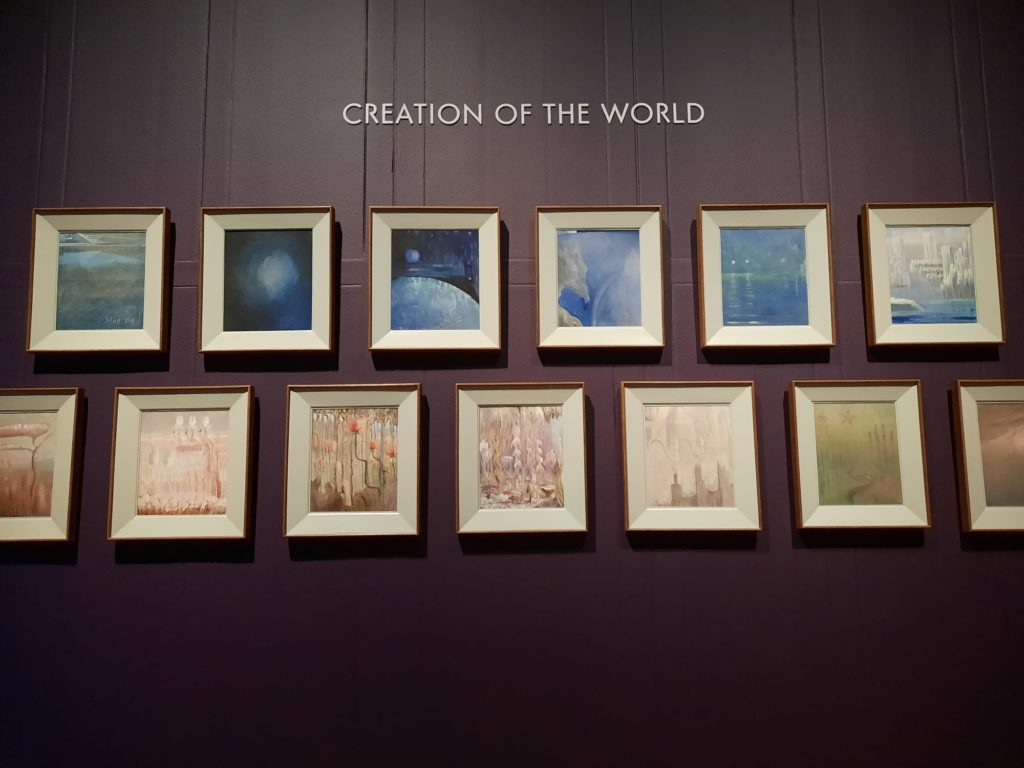
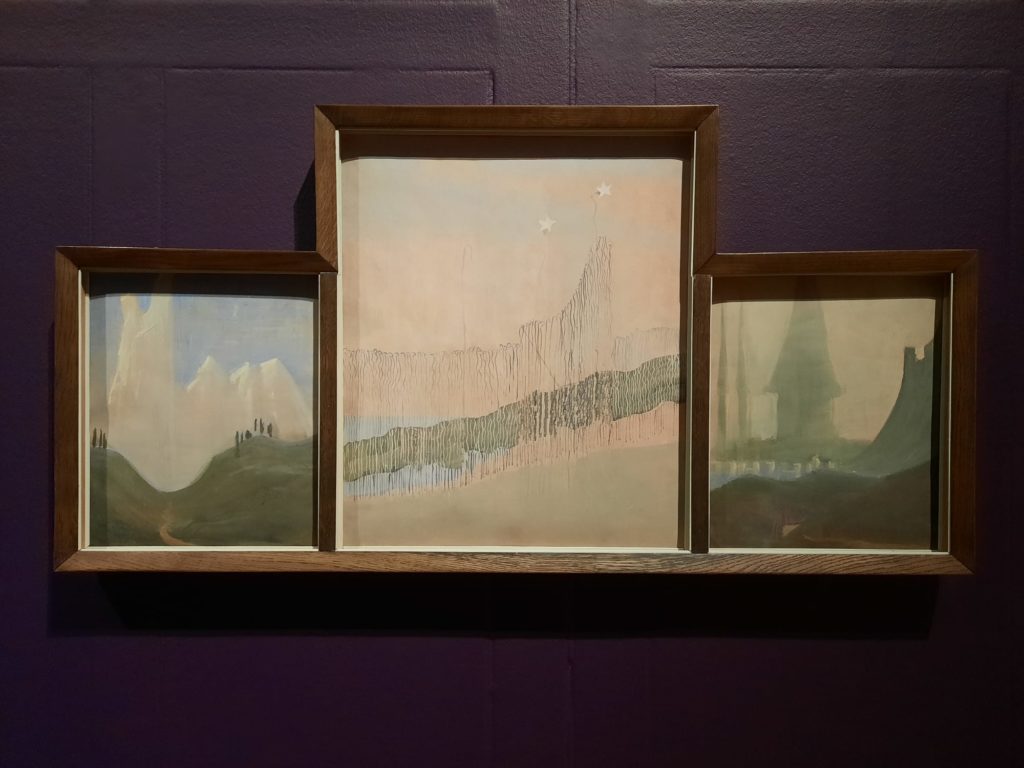
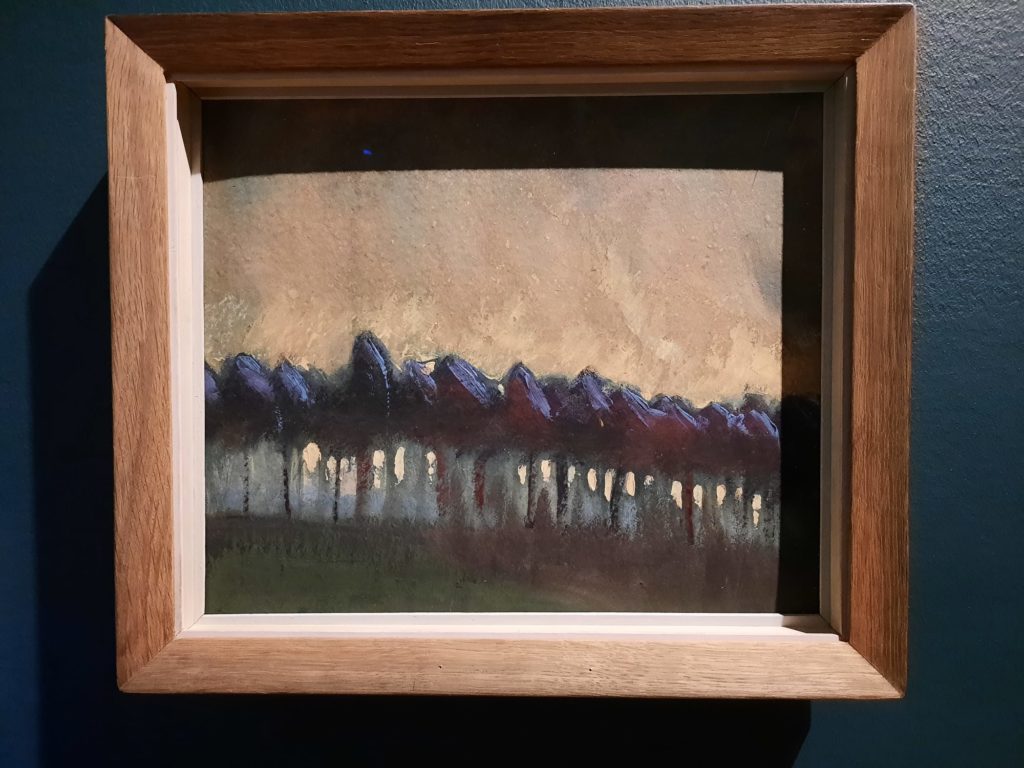
M.K. Čiurlionis
Before attending this exhibition at the Dulwich Picture Gallery, how many Lithuanian artists could I have named? Probably as many as you. For those, like me, who need to plug some geographical gaps in their art historical knowledge, this exhibition is a great opportunity. Although more on geography in a moment.
Mikalojus Konstantinas Čiurlionis (pronounced Chur-lon-iss) was born in 1875 in Senoji Varėna in what is now Lithuania. Known as both an artist and a composer, he could play the piano by age five. He studied music until 1902, including at the Institute of Music in Warsaw and Conservatoire in Leipzig. After this time he began to move towards art, enrolling at the Warsaw School of Drawing and later the School of Fine Art.
Čiurlionis’s impressive musical and artistic output are at odds with how short his career and life actually were. He died in 1911 aged 35 from pneumonia, while being treated for depression. Having enjoyed a hugely creative period between 1902 and 1909, he left behind over 400 compositions and 300 works of art. Many of his artworks are today in the collection of the M.K. Čiurlionis National Museum of Art in Lithuania, the lender of all works in this exhibition. Between them, they give a firm sense of Čiurlionis’s evolving technique and artistic vision, and hint at an influence wider than his current recognition outside of Lithuania would suggest.

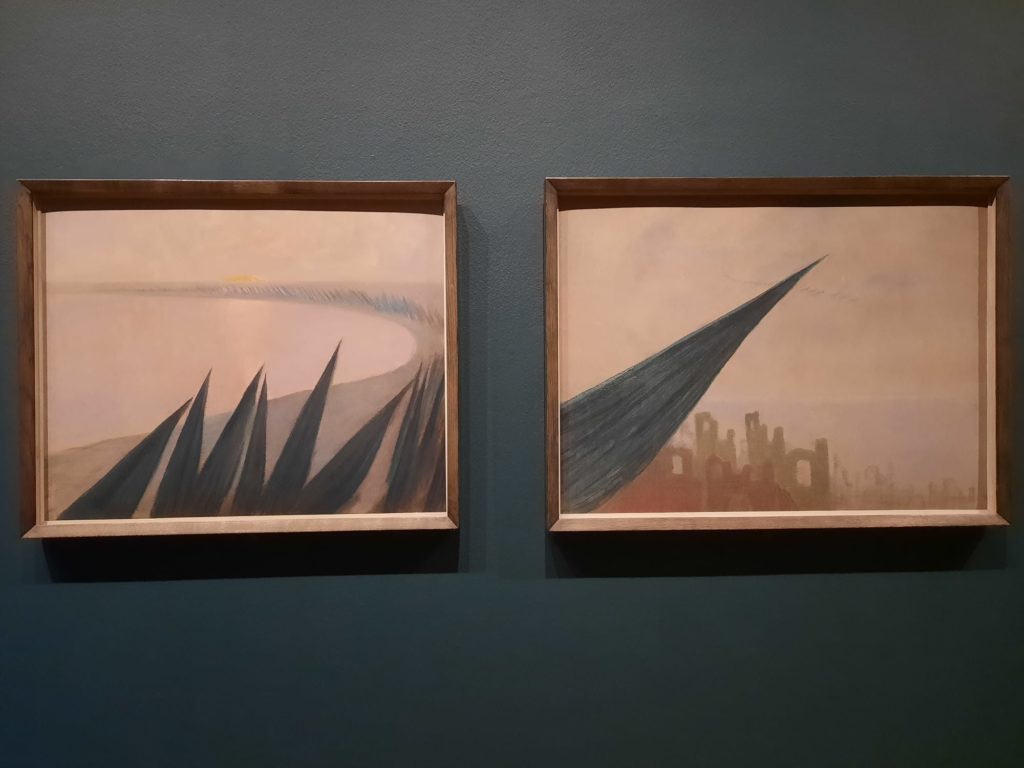
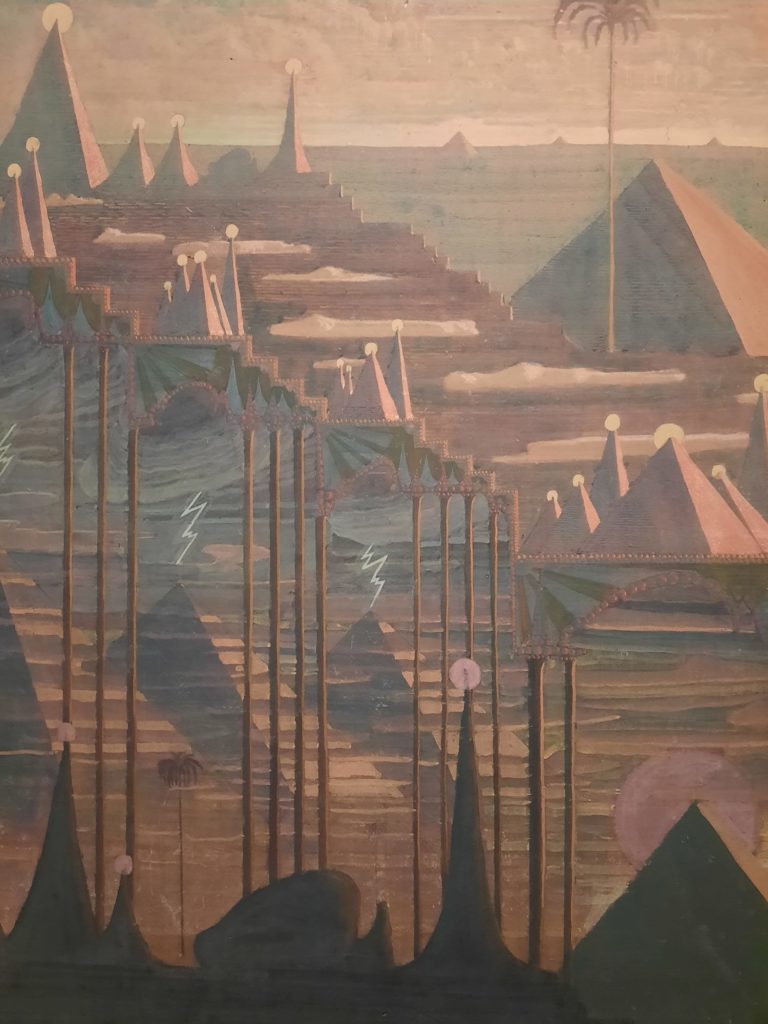
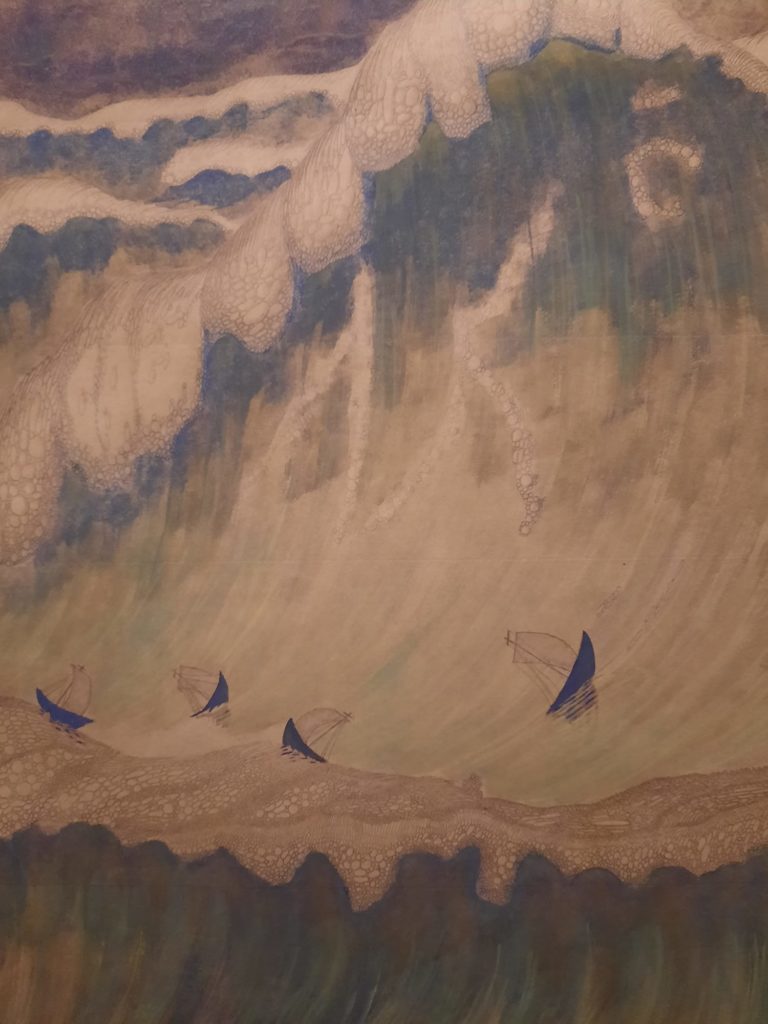
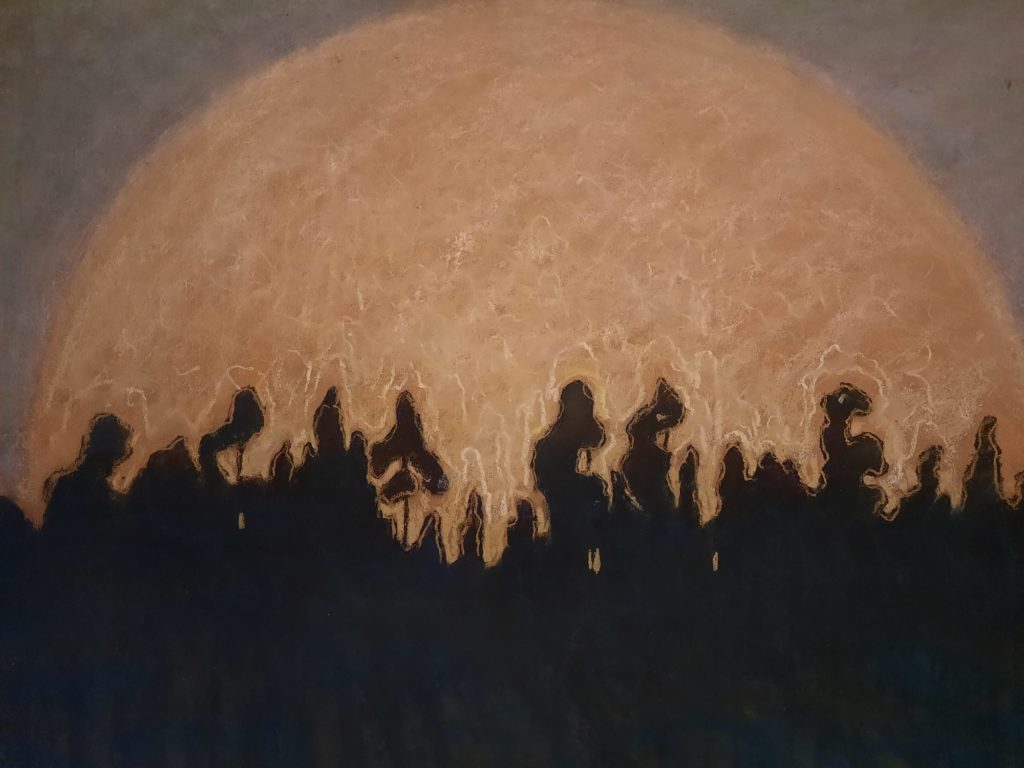
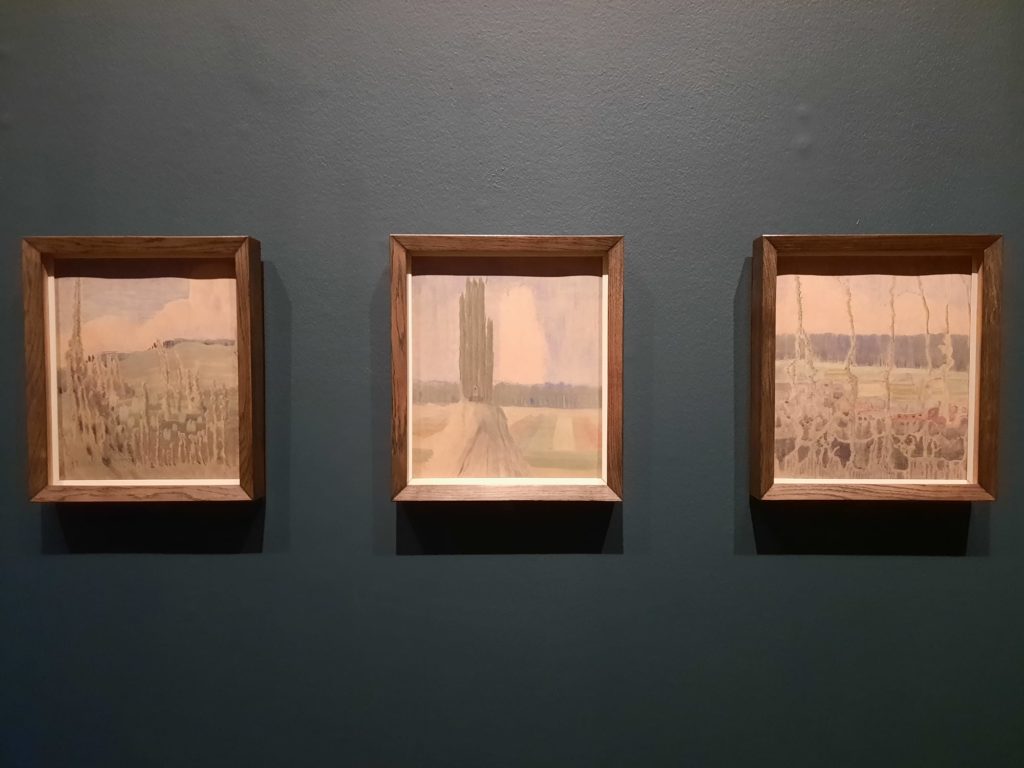
Between Worlds
From the outset, it’s clear where the exhibition title, Between Worlds, comes from. Like other artists we have recently encountered, including Hilma af Klint and Einar Jónsson, Čiurlionis depicted a world beyond what we know. Elements that are recognisable (and sometimes recognisably Lithuanian) become otherworldly cities. Symbolic compositions hint at cosmic and spiritual forces. As a further layer in the mix it’s no coincidence that the word ‘composition’ applies to both artworks and music: the artist’s musical training is evident in his paintings as well.
The exhibition charts the development of M.K. Čiurlionis as an artist. We start with some early works. As a bold statement of artistic vision this includes a series entitled The Creation of the World from 1905/6, delicate works in tempera on paper that show a fusion between Biblical sources and other belief systems. This first room introduces other strands that can be traced through the rest of the exhibition, including an interest in Goethe’s colour theory, geology, and an alignment with Symbolism.
As we move through the exhibition, there are deep dives into the context in which Čiurlionis lived and worked, and his Symbolist approach. In the middle of the exhibition the Dulwich Picture Gallery’s mausoleum (this post has more historic info in case you’re wondering what that’s all about) is a serene, beautifully-lit spot to listen to some of his musical compositions. Later on we look at images inspired by the zodiac or the imagery of cities. And there is an exploration of Čiurlionis as a pioneer of abstraction. Which brings us to an interesting point.

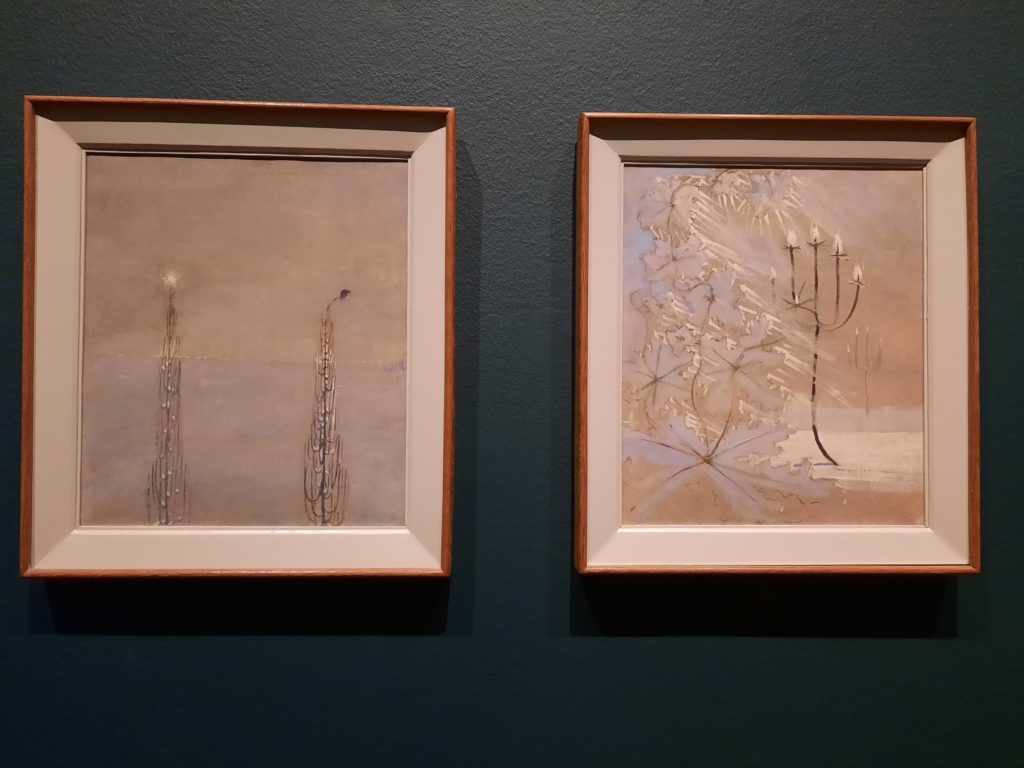
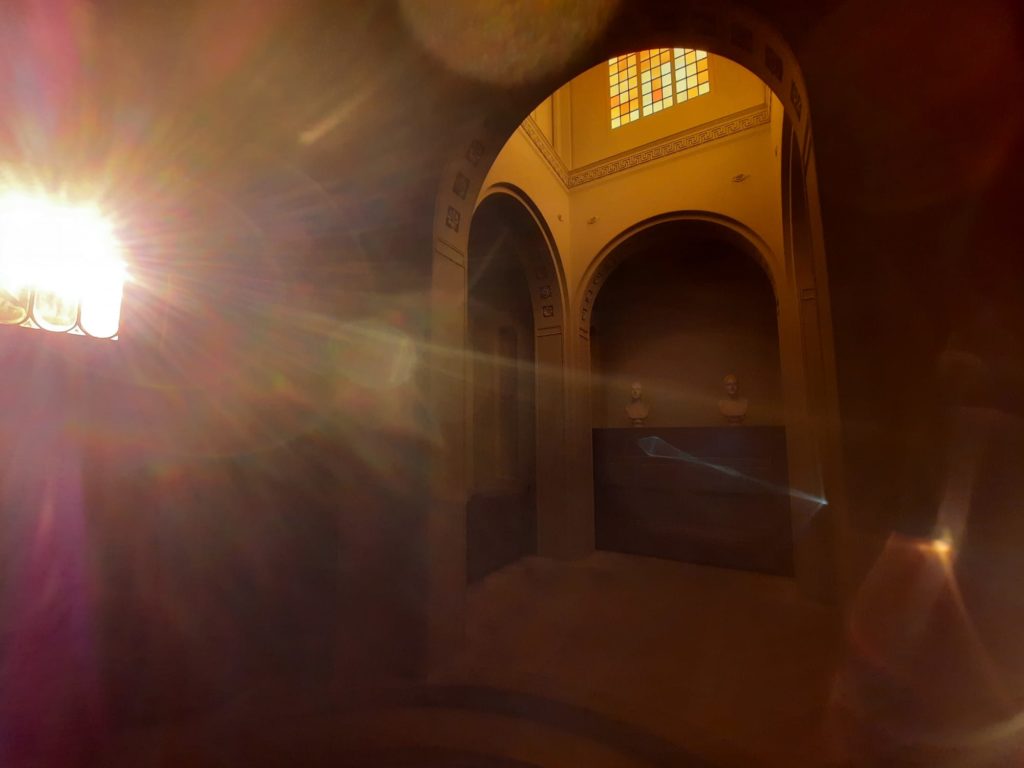
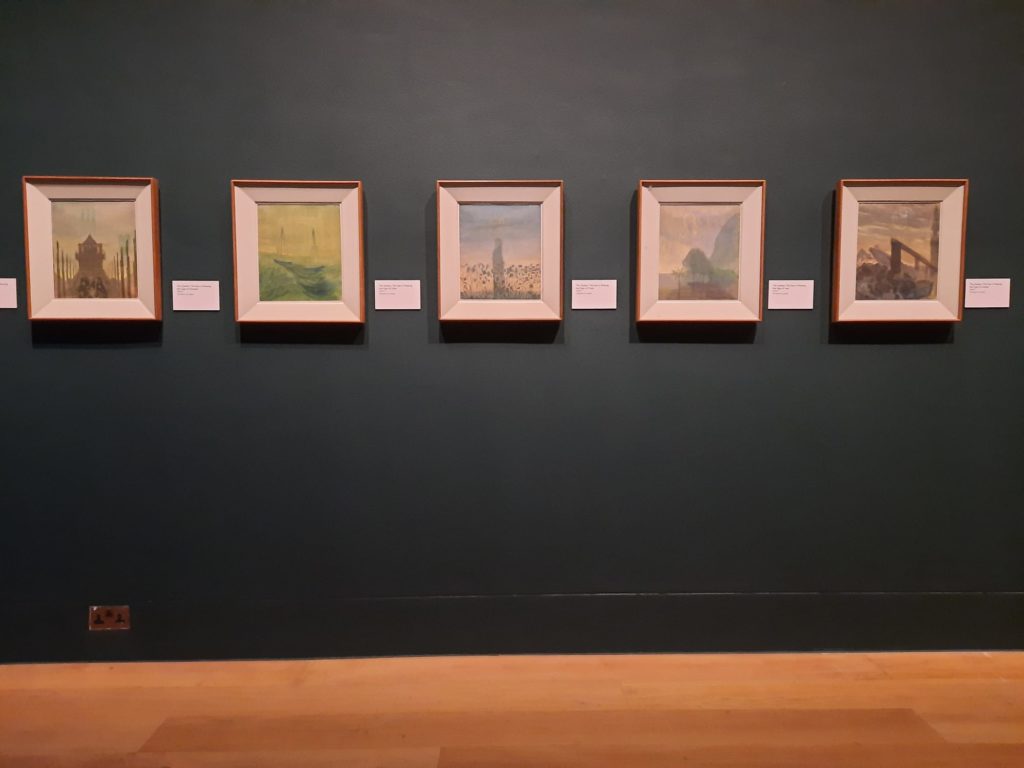
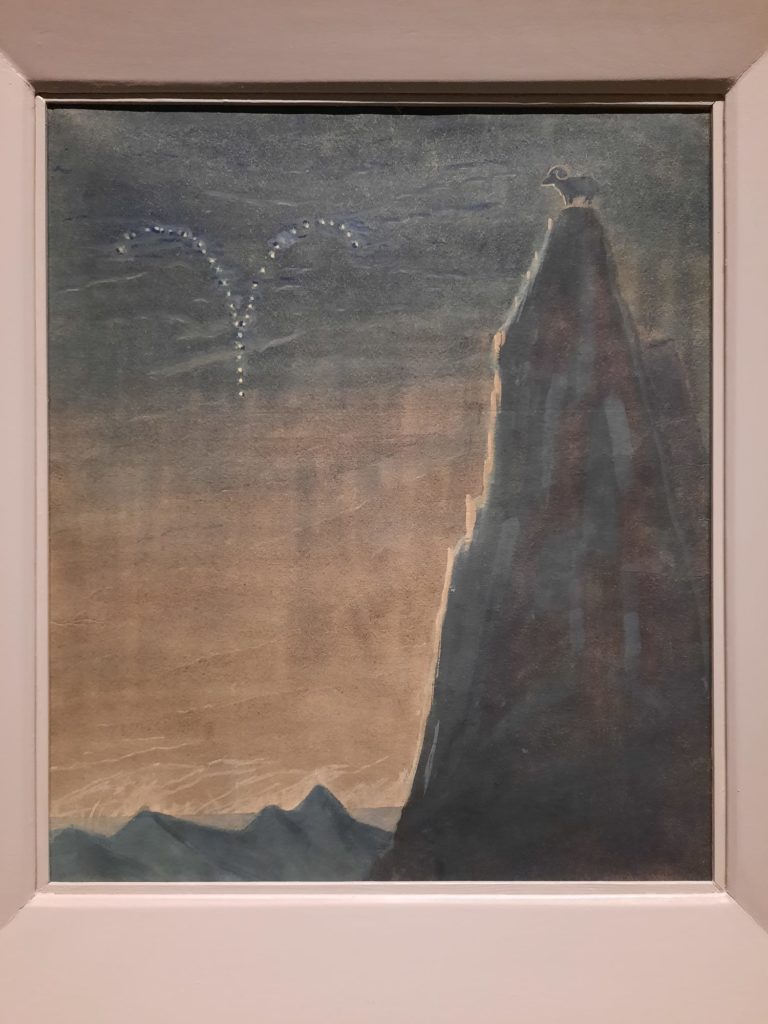
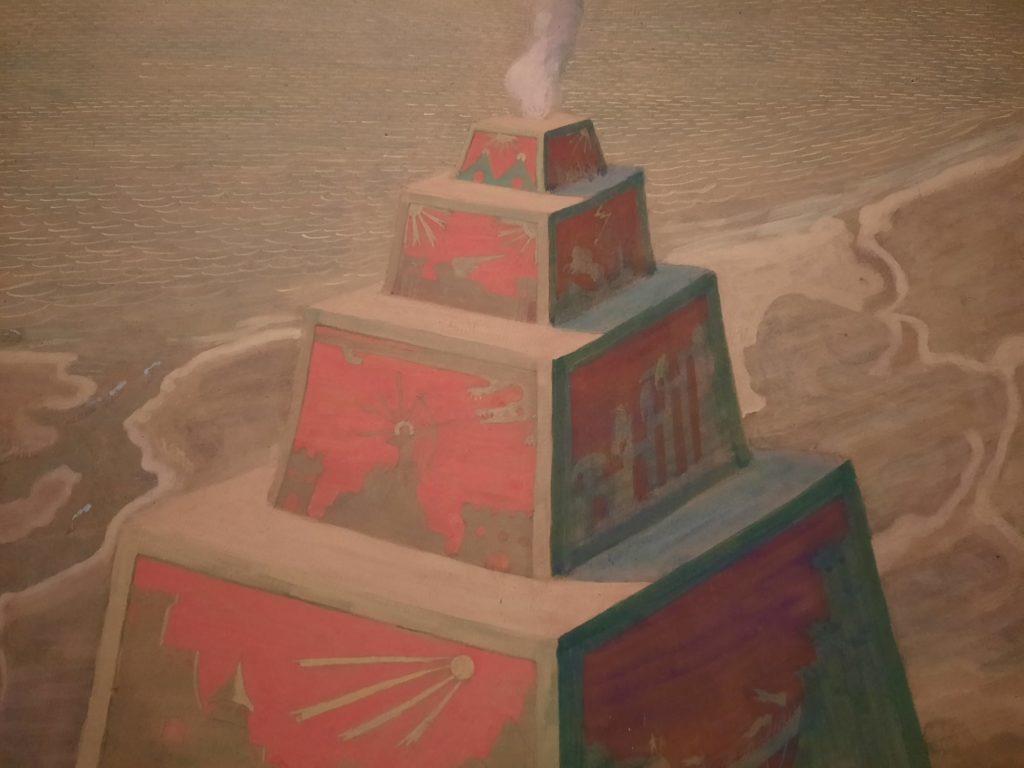
Art History In A Changing Context
While visiting M.K. Čiurlionis: Between Worlds I had a small but interesting lightbulb moment. It was about the way that the constant redrawing of geo-political boundaries influences our understanding of art and artists. What I mean specifically is what I was talking about at the outset: that I can’t think of any other Lithuanian artists I know of. But here’s the thing: would M.K. Čiurlionis have thought of himself as such? Or solely as such?
The village of Senoji Varėna which is now in Lithuania was in the Russian Empire in 1875. Because there wasn’t a Lithuania at the time. It had been partitioned between the Russian Empire, Prussia and the Habsburg Monarchy. It then becomes a lot less surprising to learn that Čiurlionis moved in artistic circles alongside Malevich (who took inspiration from structures in Čiurlionis’s Sonata paintings) or Kandinsky. Čiurlionis and Kandinsky both exhibited at the St Petersburg Salon of 1909, and Kandinsky invited him to contribute to an exhibition in 1910 (Čiurlionis was unable to do so, being unwell already).
Given that Čiurlionis was already working in a style which was at least semi-abstracted and Kandinsky has been said to have painted the first abstract work in 1911, we can start to see where the idea that he may be a pioneer of abstract art emerges. Kandinsky’s widow denied that he had seen these proto-abstract works. But then again she would.
So the interesting thing for me here, to get back to my point, is about understanding artists in context. M.K. Čiurlionis was a passionate Lithuanian nationalist, so it’s reasonable to claim him as a national icon now. But he was also part of an exchange of ideas and experiences as a citizen of the Russian Empire. Thinking of the world in different terms today, it’s easy to forget how artists of earlier periods self-identified and understood the world, who and what they had access to in terms of artistic inspiration and interchange. Food for thought.
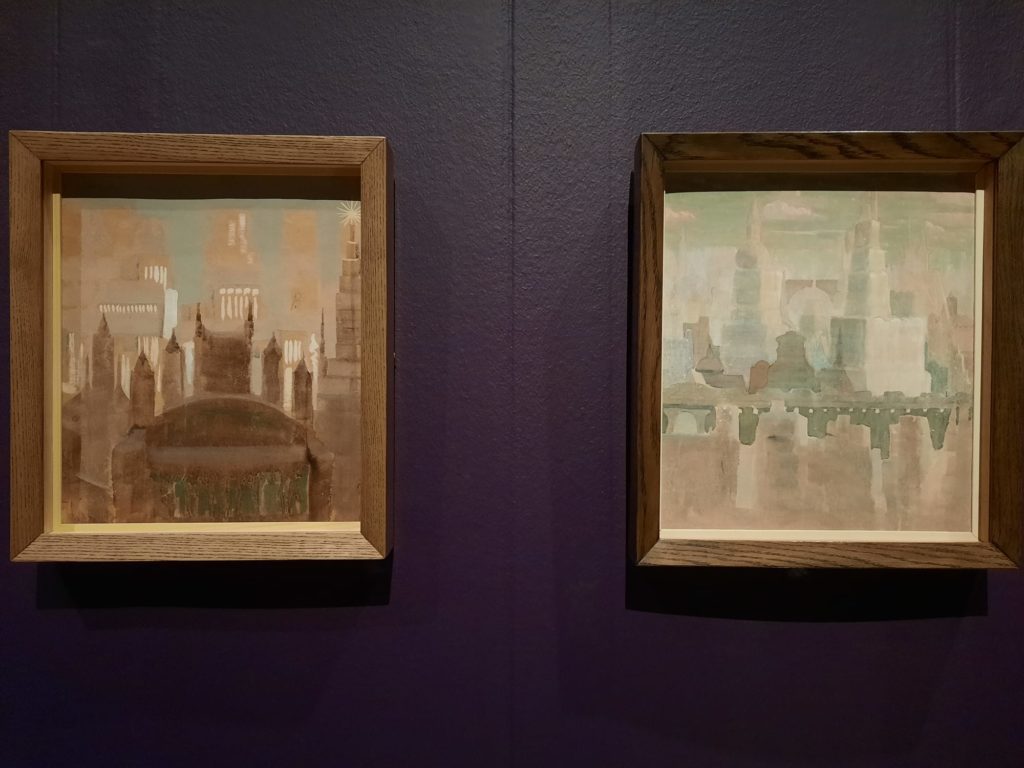
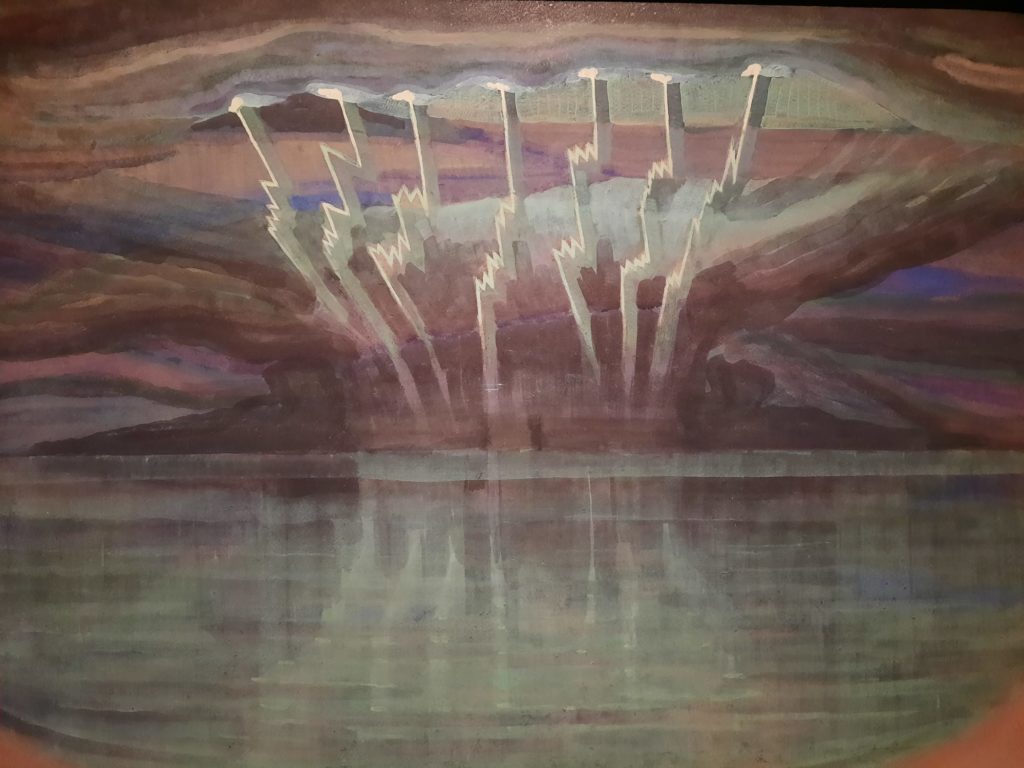

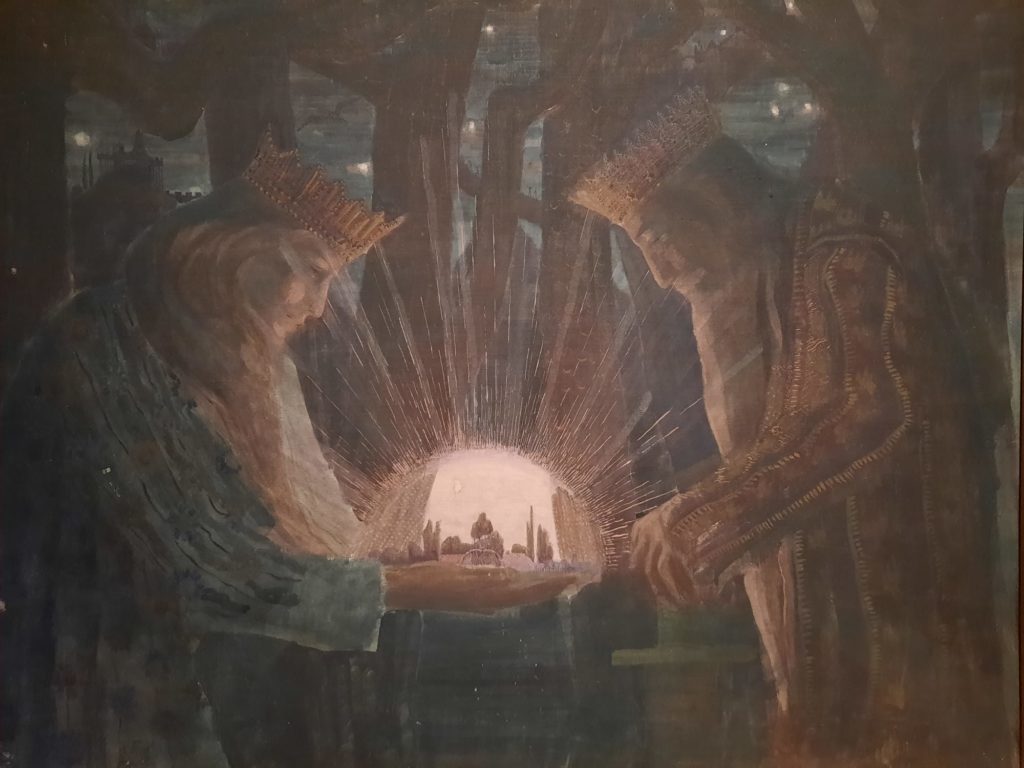
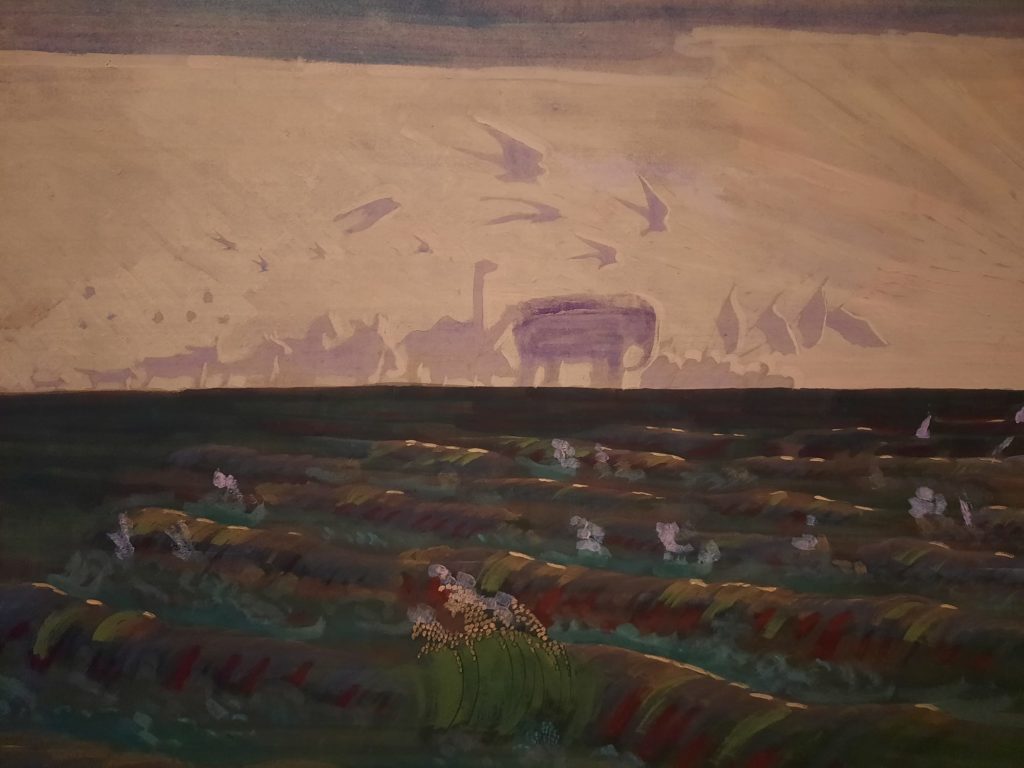
Final Thoughts On M.K. Čiurlionis: Between Worlds
That an exhibition had me thinking so much about the world shows that this is a good pick. It’s as cerebral as you want it to be, or alternatively can also be experienced as a straightforward ‘getting to know a new artist and his work.’ There’s a good breadth of works on view, and to return to a point I often make when seeing exhibitions, is a chance to see things not represented in UK gallery collections.
The artworks themselves I think are best seen together. On their own I might overlook these delicate works, often on paper and in soft colours. It’s together that you get a sense of the artist. Of his inner world, his beliefs. Of how he combined his talents for music and painting. It’s a shame, evidently, that he died young and just as his experiments were pushing artistic boundaries. But the body of work he left behind does speak for itself when given sufficient space and attention, as it is here.
Best visited at a quiet time, and not in a hurry as the musical interval in the mausoleum is a nice moment. There is about a month left to enjoy this exhibition and get to know M.K. Čiurlionis for yourself.
Salterton Arts Review’s rating: 4/5
M.K. Čiurlionis: Between Worlds on until 12 March 2023
Trending
If you see this after your page is loaded completely, leafletJS files are missing.

